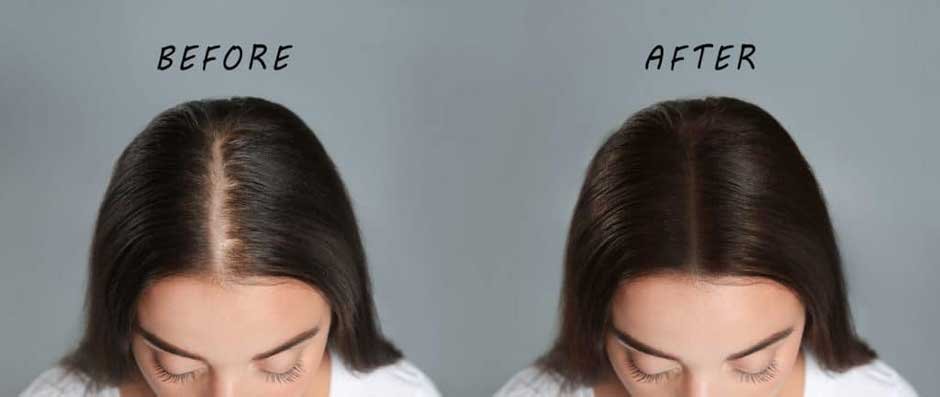Hair loss in women is finally getting the attention it deserves. For decades, it was overshadowed by the focus on male pattern baldness, leaving many women to feel isolated and unsure where to turn for help. In reality, female hair loss is common, affecting millions worldwide, and it can develop at any age. It may present as a widening part, a thinning ponytail, or an overall loss of volume. While genetics often play a major role, hormonal changes, nutritional deficiencies, and certain medical conditions can also contribute.
Today, there are more options than ever before to slow shedding, stimulate regrowth, and maintain density. These range from daily medications you can use at home to advance in-office procedures, and for some women, even surgical solutions like hair transplants.
Why You Should See a Hair Surgeon
While dermatologists often diagnose and begin treatment for hair loss, a hair surgeon has specialized training and experience in addressing all forms of thinning, from early-stage shedding to advanced balding. A skilled hair surgeon can accurately diagnose the cause, design a customized plan, and integrate both medical and procedural therapies to produce the best possible outcome.
Starting Medications Early
Many women do not realize that they can begin treatment before hair loss becomes severe. In fact, early intervention often produces the best results, as once a hair follicle is inactive for too long, it may not regrow.
Three of the most important medications used in female hair loss treatment are Dutasteride, Minoxidil, and Spironolactone. These form the foundation of many successful medical plans and can be started at almost any age with the right medical oversight.
Dutasteride is a potent DHT (dihydrotestosterone) blocker. DHT is the hormone that progressively miniaturizes hair follicles in genetically susceptible individuals. By lowering DHT levels, Dutasteride helps protect hair from further damage and can allow follicles to remain in the growth phase longer. While it is not FDA-approved for women, it is often used off-label with strong results, particularly in postmenopausal patients or women not planning pregnancy. Because of potential effects on a developing fetus, Dutasteride should be discontinued well before attempting conception.
Minoxidil works differently. Instead of blocking hormones, it increases blood flow to the scalp and extends the active growth phase of the hair cycle. It is available as a topical foam or solution and in low-dose oral form by prescription. While generally safe, it is typically paused during pregnancy. Consistency is key—stopping Minoxidil usually results in gradual loss of any regrowth achieved.
Spironolactone was originally developed as a diuretic but also blocks androgen activity, making it helpful for women with hormonally influenced hair loss. It is particularly useful for those with other signs of elevated androgens, such as adult acne or unwanted facial hair. Like Dutasteride, Spironolactone should not be taken during pregnancy.
Considering Reproductive Plans
The flexibility to start these medications at nearly any age is one of their major benefits, but reproductive goals must be considered. A thorough consultation with a hair surgeon can help you plan a regimen that is both effective and safe for your stage of life.
If pregnancy is in your near future, certain medications will need to be avoided, paused, or substituted with safer options. Your doctor can help create a phased plan so that you can resume or adjust treatment afterward.
Advanced In-Office Therapies
In-office treatments can enhance results for women who want to accelerate their progress or for those who cannot take certain oral medications. Two popular and well-researched options are mesotherapy with Dutasteride and platelet-rich plasma (PRP) therapy.
Mesotherapy with Dutasteride delivers tiny doses of the medication directly into the scalp. This localized approach allows for high concentrations at the follicle level while limiting systemic absorption. It is an attractive option for patients concerned about side effects from oral dosing.
PRP therapy uses a patient’s own blood, processed to concentrate platelets and growth factors, which are then injected into the scalp. These growth factors stimulate follicle activity and can improve hair density and thickness. PRP is often performed in a series, followed by maintenance sessions every few months.
Combining Treatments for Optimal Results
Many women benefit from a combination approach—medications for systemic control, plus targeted procedures for local stimulation. A hair surgeon can tailor these therapies to your exact pattern of loss, hair characteristics, and goals. Combining treatments often produces a synergistic effect, maximizing both preservation of existing hair and regrowth potential.
When to Consider Surgical Options
For some women, particularly those with significant thinning where follicles are no longer viable, surgery may be the best long-term solution. In these cases, hair transplants can provide natural, permanent coverage in targeted areas. Surgical hair restoration for women must be carefully designed to create a soft, feminine hairline and to blend seamlessly with existing density.
Even after surgery, maintenance therapy is essential to protect native hair. This is why most hair surgeons recommend pairing transplants with ongoing medical or procedural treatment.
The Importance of Timing and Consistency
The earlier you begin, the more hair you can save. Subtle changes such as increased shedding or a more visible scalp under bright light often indicate the early stages of loss. Seeking a professional evaluation at this point can dramatically improve your long-term results.
Consistency is equally critical. Most hair loss treatments only work for as long as you use them. A personalized plan from a hair surgeon will help ensure you can stick to your regimen comfortably for the long term.
Conclusion
Women have more options than ever for addressing hair loss. Whether you start with medications like Dutasteride, Minoxidil, and Spironolactone, explore mesotherapy or PRP, or eventually consider hair transplants, the most important step is to seek expert guidance early. A consultation with a skilled hair surgeon can provide you with a clear diagnosis, a realistic treatment timeline, and a plan tailored to your unique needs. With the right approach and consistent follow-through, it is entirely possible to keep your hair healthier, thicker, and more vibrant for years to come.










